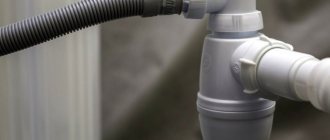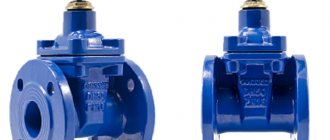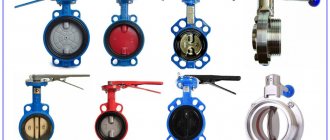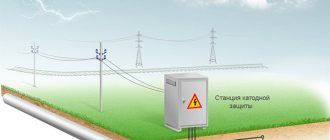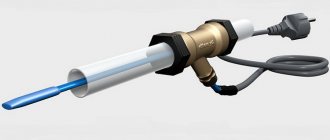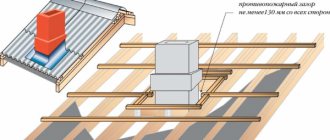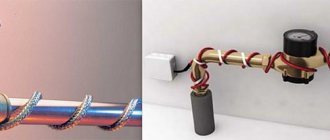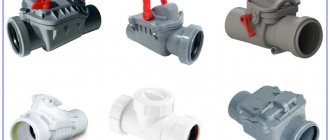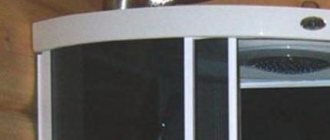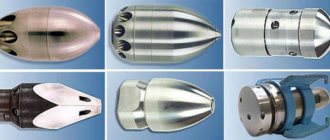One of the most popular devices in drainage systems is the sewer drain ladder. They are intended for receiving and discharging wastewater from a horizontal floor surface into the sewer system.
These devices are widely used in residential, public and industrial buildings. The design of the drain must provide the following functions: Types of sewer drains. quickly and effectively drain water; filter wastewater from large contaminants; prevent the penetration of unpleasant odors into the room. Advantages and scope of a dry drain Until recently, only drains with a hydraulic seal were produced.
A water seal is a specially curved tube filled with water, which prevents unpleasant odors from the sewage system from entering the room. Such a seal requires periodic updating in the form of a spill of water. The most common problem when operating sewer drains with a hydraulic seal is the drying out of water and the unpleasant odors that the sewer is rich in freely penetrate into the room, causing inconvenience to people. Scheme for assembling drains with straight and oblique outlets Let's figure out what can lead to the drying out of the water seal.
There are many reasons, and the most important among them are: the drain is used sporadically (for example, it is placed in a guest bathroom, in a shower room of a hotel complex, or is intended to drain water in case of an emergency leak, and not for regular everyday use), heated floors, increased air temperature indoors, hot climate, failure of the water seal due to errors in the design of the sewerage system. Currently, the requirements are becoming more stringent, people need comfortable use of devices, eliminating additional labor costs for servicing the devices. The way out of this situation is to use a drain equipped with a dry seal, and this solution is becoming more and more popular. This device does not cause any unpleasant odors in the absence of a water seal and does not require frequent maintenance. A dry shutter for sewerage can work either independently or in combination with a water seal, when each of them complements each other. Dry shutter device The most common devices: Operating principle of a dry shutter. Membrane. Under the pressure of water passing through the drain, the valve opens, and after the water passes, the spring moves the membrane to its original position.
Access to unpleasant odors is reliably blocked. Float-type. It works due to the fact that the float is always on the surface of the water seal, and when the water evaporates, the float ends up at the very bottom and closes the passage. Pendulum. Under the influence of gravitational forces, a mechanical device constantly strives to occupy a position that blocks the sewer pipe. Based on the properties of the molecular memory of the material.
Tubes made of elastic material are used, which always tends to return to its original shape. Dry and combined drains are made of durable materials (mainly a plastic body and a stainless steel grid) using modern equipment. The model range of these devices is expanding; you can select a dry drain equipped with a check valve to protect against the entry of wastewater from the sewer system into the room in case of flooding, as well as select models that can be used in unheated rooms at sub-zero temperatures, as well as heavy-duty, capable remain sealed under significant impact loads. Main technical parameters When choosing any sewer drain, including those with a dry seal, you must pay attention to a number of the following important technical points: the direction of the outlet and its diameter, throughput and its height. The outlet of the ladders is either located horizontally (straight and oblique outlets are made) or vertically (pointed down).
The next parameter that needs to be taken into account is the diameter of the outlet. There are drains with a nominal bore of 50 and 100 mm. In residential construction, drains with a nominal bore of 50 mm are mainly used; they must ensure the removal of wastewater in an amount of at least 0.7 l/s.
Drains with a nominal opening of 100 mm are installed in public premises and industrial facilities; they must ensure the removal of wastewater of more than 2.1 l/s. When choosing a sewer drain, great attention should be paid to such a parameter as the height of the drain (in modern models, the height ranges from 7 to 18 cm). A drain made of high-quality materials has an almost unlimited service life. Installation of a sewer drain Installation of a dry device is no different from installing a drain with a water seal.
It must be remembered that its service life, the safety of water leakage and the aesthetic appearance after finishing depend on high-quality installation, correct connection to the sewer system and the proper selection of the drain. Installing a drain entails some lifting of the floor in a shower room or other room in which it is necessary to drain wastewater from the horizontal surface of the floor. It is extremely important to create a floor slope to direct water to the drain. Technical parameters of the sewer drain. The floor in the room in which the sewer drain is installed must be a system consisting of several layers: a material that provides thermal and sound insulation (for example, polystyrene foam); concrete screed; membrane material with waterproofing properties; concrete screed, which sets the required slope towards the drain; ceramic floor tiles with a rough surface and a minimum percentage of water absorption, which are laid on a special adhesive solution. When carrying out installation work on connecting to the sewerage system, it is necessary remember that the ladder grate is installed flush with the floor surface and should not protrude above the tiles located in the immediate vicinity.
The tiles are laid starting from the ladder. The thickness of the joints between the tiles should not exceed 2 mm; when sealing the joints, water-resistant grout is used. After the work is completed, the drain is securely concreted into the floor. Make your choice in favor of a dry sewer drain, and you will be able to forget about the musty smell from the sewer, and you will also not need to regularly replenish the water seal with water. This device will serve you for many years, perform its functions reliably and delight with ease of maintenance. Share a useful article: Similar articles:
In order to eliminate the possibility of sewer gases entering the premises, various devices are used that differ in configuration. The simplest option is to install a sewer drain with a water seal. However, its use is not justified in all cases, so there is another option - a ladder with a dry seal.
The design features of a shower or hydrobox in most cases allow you to install only a special type of siphon - a dry drain
Scope of use and features
A ladder is a device that performs a number of important functions. Let's consider the main ones:
- connecting plumbing equipment to the sewer line; filtering liquid before its disposal; removing water into the drainage system; creating a seal that prevents sewer gases from entering the rooms.
In order to connect a plumbing fixture to the sewer network, siphons of various designs are used. A siphon with a water seal cannot be used if it is necessary to remove water into the sewer system from the floor surface of showers or baths. Installing a siphon with a water seal is impossible in this case for a number of reasons, however, the main one is lack of space.
In such situations, it is customary to use a sewer drain, which is an equally effective device. It ensures effective removal of water from horizontal surfaces.
Important! Drains, like siphons, can have sewer water seals, but in conditions of periodic use, drains with water seals are not relevant.
The shower drain performs the same functions as a siphon - it receives, filters and discharges wastewater into the sewer system, preventing the penetration of gases from drain pipes into the house
This is due to the fact that the water located in the seal prevents sewer gases from entering the room.
During constant operation, the water level remains unchanged, as it is replenished from time to time. Accordingly, with periodic use, the water located in the drain with a water seal will simply dry out, as a result of which a path will open for sewer gases and they will begin to penetrate into the room. For these cases, a dry type sewer seal is needed.
In addition, the following circumstances can cause the water seal to dry out or fail:
- warm floor; high air temperature in the room; improper arrangement of sewer communications.
It is worth noting that even fan ventilation installed according to all the rules will not always help when the water plug dries out. Therefore, the only correct solution in such circumstances is a dry water seal.
Using an air vent valve in a private home
Sometimes there are situations when it is necessary to install a vent valve. This is necessary if, when designing a private house, they did not provide for the installation of a drain pipe, which provides sufficient ventilation of the sewer system, or if it is not possible to bring this pipe through the roof.
The sewer check valve has a long service life
The air vent valve provides many advantages to private homeowners:
- You can significantly reduce the costs associated with the installation of a sewer system and roofing work without removing the riser outside;
- The absence of a drain pipe will help avoid roof leaks;
- The likelihood of fire spreading through sewer pipes in the event of a fire is reduced;
- There is no such nuisance as a pipe on the roof freezing and a stream of cold air passing through it.
A valve installed on the drain pipe significantly increases the efficiency and quality of ventilation, especially in those houses where a large number of different sanitary appliances are installed. In addition, if the house uses local sewerage using a septic tank located near the house, or if there is a swimming pool and other devices with a large number of drains, it is necessary to include a waste pipe in the sewerage system.
Types of dry ladders
Today, shower drains come in several types, which differ in design and operating principle:
Membrane. This type is quite common and functions due to water pressure.
Under the pressure of the liquid, the ladder gate opens and then returns back. Return to the original position occurs using a spring element. The membrane seal is reliable and effectively prevents sewer odors from penetrating into the room.
Drains vary in design and shape, the most common is the membrane type
Float valves. They function due to a structural element - a float, which, when water passes through the sewer valve, is always located at the top, and when the water leaves, it sinks to the very bottom, thereby blocking the passage. From a design point of view, such a device is considered very simple and, if necessary, can be done with your own hands using a plastic ball as a float.
Pendulum. The pendulum dry ladder is the most complex device. Its operating principle is based on the molecular memory of the material. Such a mechanical device constantly strives to occupy a certain position in which access to the sewer pipe will be blocked.
Dry shower drains are made from fairly durable materials.
The body is usually made of plastic, and the decorative grille is made of stainless steel. If necessary, you can purchase a device with a built-in check valve. It is used instead of fan ventilation and performs a protective function, preventing unpleasant odors from the sewer from entering the room.
In addition, there are devices that can be used at low temperatures in rooms without heating devices. You can also choose a heavy-duty sewer valve that is resistant to high mechanical loads.
Siphon operating principle
The location of the device does not affect its purpose, which is:
- compensation of water hammer in order to limit the load on the gravity sewage system;
- removal of air with an unpleasant odor from the waste system into residential premises.
In the case when the water seal for the sewer system is selected correctly and installed in the bathroom in compliance with all requirements, there is no unpleasant odor from the sewer system in the room, and its operation will not have any malfunctions for a long time. This is thanks to knowledge about the operation of a water seal in a sewer and its correct use.
Structurally, the closure devices have differences, but, in essence, this design is a product made from pipes, on the bends of which water is stored, which blocks the lumen along the inner diameter.
There is always a plug of water inside the pipe, which is renewed from time to time. During a long break, the water in the water seal gradually evaporates, which allows odors from the sewer to enter the room. Owners of country houses that are visited periodically may encounter this factor.
There is an interconnection among the elements of the sewer system. For example, a drain pipe is necessary in order to prevent “water seal failure” - drawing water into the riser during descent by equalizing the pressure in the sewer pipe. Air valves of various designs are also used for this task. They are used when there are no ventilation pipes in the building.
Main technical characteristics
Before purchasing a dry sewer drain, you need to study its technical characteristics. First of all, you should pay attention to the following points:
- location of the outlet; indicators of the outlet section; height; throughput coefficient.
To purchase a suitable drain, you need to know exactly its dimensions and the diameter of the drain hole.
The outlet for shower drains with a dry shutter can have two locations:
- vertical; horizontal.
The next factor that is worth paying attention to is the indicator of the outlet cross-section. Today you can find devices on sale that have a diameter of 50 and 100 mm.
Useful information! For household purposes, products with an outlet of 50 mm are used, and drains with an outlet cross-section of 100 mm are used in public showers and baths. The second version of the devices is capable of removing wastewater at a speed of more than 2.1 l/s.
Before purchasing this device, much attention should be paid to such an indicator as the height of the ladder. Today, there are models whose height ranges from 7 to 18 cm.
Tips for choosing a device
When choosing a dry sewer drain, experts recommend paying attention to the following points:
First you need to decide on the number of risers. As mentioned above, for private purposes, a sewer valve with a nominal bore of 50 mm is perfect; a device with a horizontal outlet can be installed in a limited space and has a height of 6 to 10 cm, and a device with a vertical outlet requires at least 15–18 cm space. Before installation, you need to take measurements and decide which sewer valve is suitable for your case.
It is recommended to check the serviceability of all structural elements of the dry sewer drain before purchasing. It is also advisable to check how it functions. To do this, you can pour water from a bottle into it.
The device with horizontal outlet can be placed in a space with a height of 6 cm
After you have decided on the technical parameters, you can begin to choose the appearance of the device. The drain grating can be made of different materials and have different perforations. A variety of design solutions allows you to choose a device that will easily fit into the interior of the bathroom.
Variety of design solutions
Today on sale you can find many dry ladders that have their own unique configuration. There are three main types of drains, depending on the shape:
- corner; round; rectangular.
Corner drains are mounted in a corner (hence the name) and are almost invisible. Rectangular and round fixtures can be installed in any part of the bathroom. Plastic, steel and combined models are very popular in the plumbing market.
Gratings for drains differ in the pattern of slots, perforations, etc. The range of gratings is incredibly wide.
There are also products that have LED backlighting. A backlit drain can create a unique atmosphere in the bathroom. However, the cost of such a device is higher.
Depending on the design, the drain is installed in the center of the floor or in any corner, and the grate can play a decorative role, complementing the interior
There are also quite a lot of budget options, so choosing the right option for a specific case will not be difficult.
It is worth remembering that the appearance of the device is secondary. The main thing you need to pay attention to when choosing such a device is the technical characteristics. This will allow you to purchase an effective product that will last for many years.
Installation of a dry sewer drain
Installing such a device as a dry sewer drain is quite a responsible undertaking. The quality and how long this device will last depends on correct installation.
Dry installation is no different from installing a drain with a water seal. When installing, a necessary condition is to raise the floor in the shower or bath room. Therefore, it is necessary to take care in advance to make the floor at a certain slope to the sewer drain with a dry seal. This will ensure the drainage of water from a horizontal surface.
Installation of such a floor involves the arrangement of a system that includes the following layers:
Thermal insulation material, which also creates sound insulation. Sound insulation is a fairly important parameter, ensuring the quiet drainage of water from the plumbing fixture into the sewer system. Expanded polystyrene is actively used as such a material. A screed made of cement mortar. A material that allows for waterproofing.
As a rule, such material is produced in rolls and has a membrane structure. However, there are also more modern options. For example, coating waterproofing, which is applied like paint.
The base must have a slope towards the ladder, only in this case the water will drain completely
Please note! There is one important rule: the grill of the device must be flush with the floor and should not be higher than the tiles that are located along its perimeter.
- Cement screed, which forms the desired slope towards the drainage device. Floor tiles, which are laid on a special adhesive solution. It is desirable that the tiles have a low water absorption coefficient and a rough surface. The organization of such a floor will ensure efficient drainage of water into the sewer system.
Let's look at a few recommendations for laying tiles on the shower floor:
- laying ceramic tiles on the floor must be done from the ladder; the seams located between the tiles must have a thickness of no more than 2 mm; when finishing the seams, special grouts are used, which must be resistant to the aquatic environment;
After installation work, the drainage device will be securely concreted into the floor.
It is not recommended to install a dry sewer seal without special knowledge in the construction field. This is due to the fact that a beginner can make many mistakes. If necessary, the best choice would be to contact specialists who will help you decide on materials, type of drain, and also carry out quick and high-quality installation.
A dry sewer seal is a device that prevents unpleasant odors from the sewer system from entering the premises. More recently, water valves were considered the most common, but every year the requirements for plumbing equipment are growing and new devices with more advanced characteristics are appearing.
A dry seal is a device that prevents gases from escaping from the sewer into the room, but does not require the presence of water in the siphon
Conclusion
In this article I shared my experience and opinion, which is very subjective. I have ordinary customers, so I rarely supply premium products.
I always try to balance price=quality.
You can safely choose products from a popular and well-known European brand and it will work for you for quite a long time.
Don't go for the cheap stuff. When you make a shower drain in the floor and water leaks somewhere under the tiles, dampness and fungus will appear. This will be quite expensive to fix. As I already wrote above, replacing a tray or drain costs several tens of times more than the cost of the product and the work to install it.
I wrote my reviews about ladders and trays and talked about the nuances. If you found the article useful, please like it and ask your questions in the comments.
Differences between dry sewer valves and hydraulic (water) valves
In order to connect a washbasin, bathtub or other plumbing fixture to the sewer network, various siphon configurations are used.
The operating principle of a dry shutter is radically different from the hydraulic model. The water seal for sewerage is made in the form of a curved tube that is filled with water. It is water that performs the barrier function and prevents sewer gases from entering the room.
However, the water type of device has a significant drawback - the water in the U-shaped pipe can evaporate, which will open the way for sewer gases. Thus, this valve needs to be constantly replenished with water. In addition, due to the design features, such a siphon is not suitable for installing a drain for showers or baths.
The dry device is structurally significantly different from the hydraulic one.
Such a device operates according to the “nipple” system. This device is made in the form of a polymer tube; the material for the valve body is most often polypropylene (PP). There are threads at the ends of such a pipe.
A dry seal does not require constant maintenance of a certain water level in the system
The internal structure of dry models involves the presence of a special membrane that acts as a check valve. Therefore, such a valve (unlike a hydraulic one) also carries out regulatory work - it prevents the water in the system from moving in the opposite direction. This function is especially important for plumbing fixtures that are located on the lower floors of multi-story buildings.
Important! Dry seals are strictly prohibited from being installed in kitchen sinks where dishes are washed. In such a system the shutter will last very little.
Unlike the water type, the dry valve does not require frequent checks and maintenance of the water level in the system. It is more functional and can work both autonomously and in conjunction with a water device.
Water drainage standards
There are standards for draining water from the SanPiN air conditioner that prohibit the drainage of condensate to the street. It is recommended to discharge condensate directly into the sewer system. In this way, you can avoid unwanted consequences from moisture settling on the air conditioner evaporator.
It is highly not recommended to remove moisture into the stormwater system. The reason lies in the unstable operation of the storm drain. When there is heavy rain, high pressure builds up there. Water can easily rise through the drainage pipes and damage the air conditioner, flooding the living space
The frequency of maintenance of the air conditioner drainage depends on the correct installation of the condensate drainage system. Use more expensive tubing that does not change internal shape when bent. This way you can build a reliable system with unhindered movement of condensate to the outlet.
Main advantages
Any device has its advantages and disadvantages. Let's look at the main advantages of a dry shutter:
- such a device does not require frequent checks; due to the fact that the dry model does not require water to perform its functions, it can be installed in unheated rooms; the polymer materials from which dry models are made have excellent performance characteristics and meet modern technical requirements; such devices are very convenient and compact; have good resistance to mechanical stress (unlike the water model, such a valve is quite difficult to break); regulate the movement of the medium in the system; have good resistance to blockages; their installation can be carried out horizontally and vertically (water devices installed only vertically); eliminate the accumulation and stagnation of water, so the development of bacterial flora harmful to human health is unlikely; have excellent sound insulation properties. Very durable.
Such valves, unlike water valves, can be installed horizontally
Types of dry seals
Dry shutters, like any other devices, have varieties. Each of them has its own distinctive characteristics that affect performance. Let's look at the main models of this device:
Membrane. This device is the simplest and most common of all options. The working process occurs thanks to a spring-loaded membrane, which opens under the influence of liquid flow and water freely enters the sewer system. When the flow is blocked, the membrane takes its original position, resulting in a reliable and sealed barrier.
Useful information! If you want to connect a dishwasher or washing machine to the siphon, you need to purchase a model that has the ability to connect the device tube on the side.
Float type. This type of shutter is quite capable of being made at home.
According to its design features, such a valve is considered a combination of water and dry types. It includes a ladder with a vertical outlet, equipped with a float valve. When assembling such a device at home, tennis balls of suitable diameter are used.
The principle of operation of such a device is quite simple: if the water seal is filled with water, then the float valve is in a floating position and does not interfere with the outflow of liquid into the sewer. When the water leaves, the float valve lowers and seals the lumen of the tube.
The pendulum type shuts off the flow thanks to a valve that moves under the influence of water
Pendulum dry. Equipped with a valve, which necessarily has one attachment point. When a fluid flow hits the surface of the valve, it deviates from its axis and opens the path for the fluid. Return to the reverse position occurs under the influence of gravitational forces.
Gates with molecular memory. Such devices are considered high-tech and their cost is an order of magnitude higher than other models. Thanks to the molecular memory of the material, their elements always return to the desired position, sealing the structure.
Self-installation of a water seal
You can call a professional technician or install a water seal yourself. You don't need any special skills or abilities. If it is necessary to make a replacement, then first you will have to dismantle the old device. To do this, you will need to turn off the water supply to the apartment or house, place a container under the dismantled siphon, or place a floor cloth under it. Next, the fastening screws are unscrewed, the siphon is removed, and the pipe outlet is plugged with a rag.
In order to install a new valve, you must perform the following sequence of actions:
- install a grate that protects the drain from large debris and contaminants;
- install the pipe using a long screw securing it to the grille;
- put a nut and a cone gasket on it;
- attach the siphon and adjust its height;
- secure the pipe in the sewer hole;
- check the reliability of fastenings and joints: to do this, let water flow for some time and observe whether there are any leaks or droplets of water.
The designs of siphons may differ slightly, but the main points on how to make a water seal are the same for everyone.
What should you consider when choosing a dry seal?
In order not to make a mistake when choosing a shutter model for each specific case, you need to pay attention to a number of factors. Basic conditions that are taken into account when choosing a shutter:
A very important indicator for choosing a suitable dry seal for sewage is the amount of waste that will pass through the device. For example, a dry shutter with a passage diameter of 50 mm is perfect for a washbasin. For showers or baths, valves with higher capacity are required.
In this case, you can purchase a device with a passage diameter of 100 mm. The second condition that is worth paying attention to is the height of the device. Horizontal branches usually have a height of 7 to 10 cm, while vertical ones need more free space (about 15–18 cm). Therefore, if you want to install the device in cramped conditions, the horizontal option is ideal.
The type of dry seal is selected depending on the type of sewerage system and plumbing fixture
Useful information! When purchasing such a device, you need to pay attention to the little things. It is advisable to check the functionality of the device. This can be done very easily - just run a small amount of water through it.
Don't forget about the appearance of the device either.
Shower drains, which include dry seals, can be equipped with a grate of any configuration. There are quite a lot of design solutions in this case. This allows you to turn the device into a decorative element that pleases the eye.
How to make a dry shutter at home?
To make this device with your own hands, you will need a plastic ball and a gasket. The diameter of the ball should be slightly larger than the drain hole.
The plastic ball must be placed on the drain hole. Next, you should secure it along the edges. The ball must be securely fixed.
To do this, it is recommended to put a gasket on the pipe - it will securely fix the ball in the pipe. The height of the wall above the level of the sewer pipe must be at least 5 cm. When using the system, the ball floats up and water flows freely into the sewer. During inactivity of the structure, the ball will lie on the drain hole and block the path of sewer gases.
How to make a water seal with your own hands
To install a water seal for a sewer yourself, you do not need special training or expensive tools.
It is enough to be careful and think through every action. They start by shutting off the water at the point of repair, then remove the old device, close the sewer socket and clean the contact areas where the new equipment will be installed from contamination.
If you are replacing a cast iron siphon, you should not waste time trying to unscrew the fasteners. Rust destroys the threads of bolts and nuts, so it is easier to break the old device with a hammer, after wrapping it with a thick rag so that the fragments do not fly around.
The size of the outlet pipe of the new device must correspond to the diameter of the sewer pipe. The installation sequence of siphons may differ depending on the installation location and design features of the device. But the general rules apply to all cases, including installing a water seal in a bathhouse with your own hands.
A grate is inserted into the drain of the plumbing fixture from above, and a gasket is placed under it. Using a long screw, fasten the grille to the connecting pipe at the bottom of the bowl.
A siphon is attached to the pipe using a nut, placing a rubber gasket between them. Before tightening the nuts, adjust the height of the device. The outlet pipe is inserted into the socket of the sewer hole. An O-ring may be needed to seal this joint. The quality of the installation is checked by passing water through a siphon for several minutes.
I like it I don't like it
